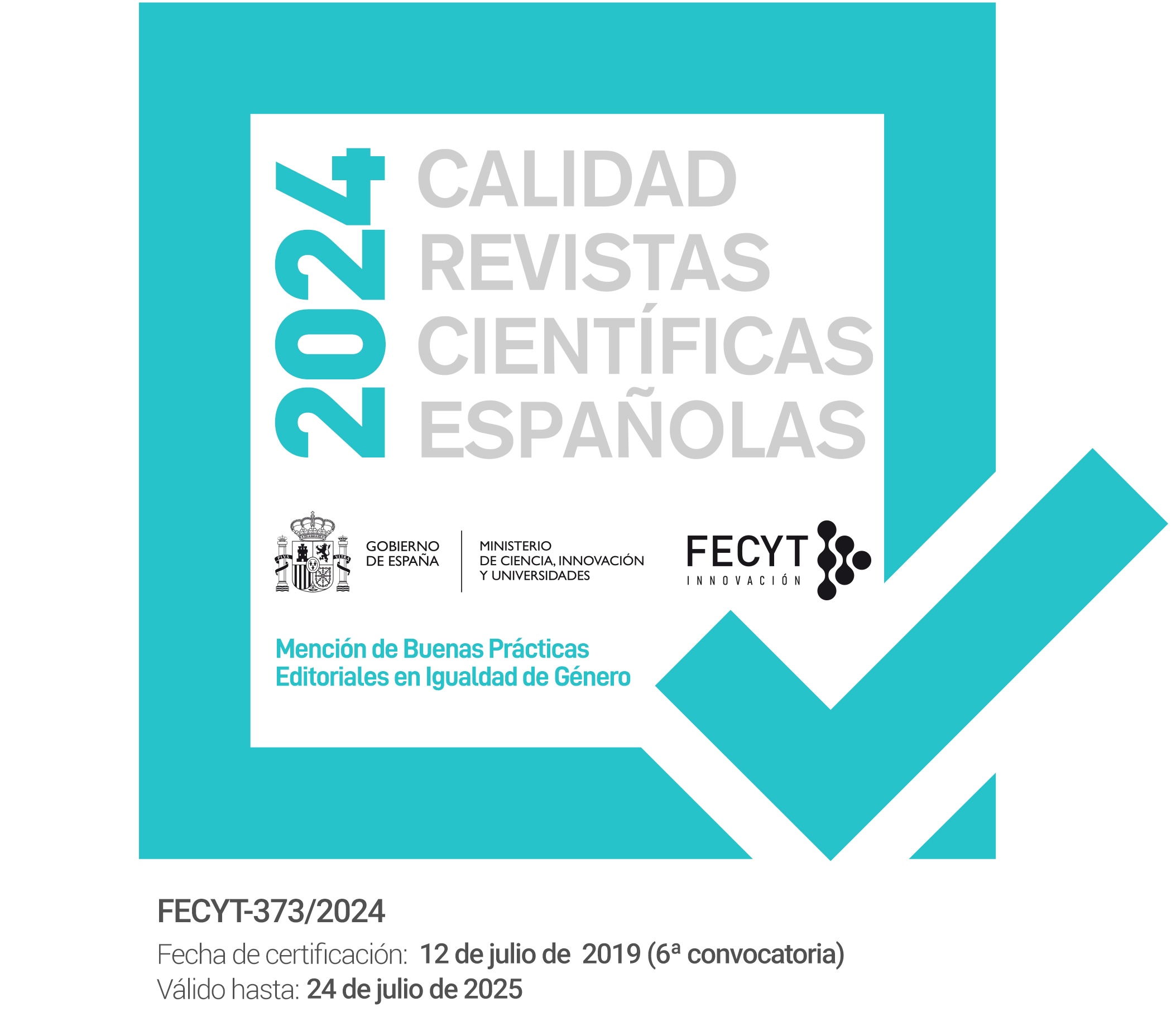Sensoriality and Hair Jewellery in Neo-Victorian Fiction and Culture
DOI:
https://doi.org/10.1344/Lectora2020.26.6Keywords:
hair jewellery, material culture, Victorian period, neo-VictorianismAbstract
In this essay I will focus on the role played by hair jewellery, a widespread craft in the nineteenth-century Anglo-American context, in neo-Victorian literature and culture. I will consider hair jewels as objects that are remnants of the Victorian past, but also as personal items that evoke affective responses through the senses. In this take on (neo-)Victorian literature and culture, I will consider the entanglement of subjects and objects, human remains (hair) and jewels, past and present, death and life in contemporary renditions of the Victorian craftwork of hair jewellery. Finally, I will argue that this fictionalisation of Victorian material traces allows us to mediate on the links and associations between the Victorian past and our (sensorial) responses to them, and that it opens up the ways to interrogate the affective relations between subjects and objects, the past and the present, then and now, as well as their impact upon our future.
References
Arnold, Jean (2011), Victorian Jewelry, Identity, and the Novel: Prisms of Culture, London & New York, Routledge.
Bachman, Maria K. (2016), "Dickens's Evocative Objects: A Tale of Two Lockets", Dickens Quarterly, 33 (1): 38-54.
Berry, Esther R. (2019), "Hurricane Katrina Hair: Rereading Nineteenth-Century Commemorative Hair Forms and Fragments Through the 'Mourning Portraits' of Loren Schwerd", Fashion Studies, 2 (1): 1-44.
Boehm, Katharina (2012), "Introduction: Bodies and Things", Bodies and Things in Nineteenth-Century Literature and Culture, Katharina Boehm (ed.), Basingstoke, Palgrave Macmillan: 1-16.
Brontë, Charlotte (1993), Villette, Sandra Kemp (ed.), London, Everyman. [1853]
Brontë, Emily (1995), Wuthering Heights, Pauline Nestor (ed.), Harmondworth, Penguin. [1847]
Brown, Bill (2001), "Thing Theory", Critical Inquiry, 28 (1): 1-22.
—(2003), A Sense of Things: The Object Matter of American Literature, Chicago, University of Chicago Press.
Browne, Victoria (2014), Feminism, Time, and Nonlinear History, Basingstoke, Palgrave Macmillan.
Chidgey, Catherine (2005), The Transformation: A Novel, New York, Picador.
Cohen, William A. (2009), Embodied: Victorian Literature and the Senses, Minneapolis & London, University of Minnesota Press.
Collins, Wilkie (1992), The Moonstone, Catherine Peters (ed.), New York & London, Alfred A. Knopf.
Cox, Jessica (2017), "Neo-Victorianism", Oxford Bibliographies. DOI: 10.1093/OBO/9780199799558-0083.
Department for Culture, Media and Sport (DCMS) (2005), Guidance for the Care of Human Remains in Museums, London, DCMS.
Dickens, Charles (1996), Oliver Twist, Salt Lake City, Project Gutenberg. <http://www.gutenberg.org/ebooks/730> [1838]
Fox, Essie (2013), The Goddess and the Thief, London, Orion.
Gamble, Sarah (2009), "'You Cannot Impersonate What You Are': Questions of Authenticity in the Neo-Victorian Novel", LIT: Literature, Interpretation, Theory, 20 (1-2): 126-40.
Gilbert, Pamela K. (2019), Victorian Skin: Surface, Self, History, Ithaca & London, Cornell UP.
Hamilakis, Yannis (2013), Archaeology of the Senses: Human Experience, Memory, and Affect, Cambridge, Cambridge UP.
Hardy, Thomas (1993), Far from the Madding Crowd, Ware, Wordsworth.
Heilmann, Ann, and Mark Llewellyn (2010), Neo-Victorianism: The Victorians in the Twenty-First Century, 1999-2009, Basingstoke, Palgrave Macmillan.
Hodder, Ian (2012), Entangled: An Archaeology of the Relationships between Humans and Things, Chichester, Wiley-Blackwell.
Jordan, Justine (2005), "Cutting Edge", Review of Catherine Chidgey's The Transformation, The Guardian, 09/04/05. <https://www.theguardian.com /books/2005/apr/09/featuresreviews.guardianreview8>
Lutz, Deborah (2015a), The Brontë Cabinet: Three Lives in Nine Objects, London & New York, W. W. Norton.
—(2015b), Relics of Death in Victorian Literature and Culture, Cambridge, Cambridge UP.
Maxwell, Catherine (2017), Scents and Sensibility: Perfume in Victorian Literary Culture, Oxford, Oxford UP.
Newton, Grace (2019), "£25 Antiques Roadshow ring found to contain lock of Charlotte Brontë's hair", Yorkshire Post, 22/11/2020. <https://www.yorkshire post.co.uk/heritage-and-retro/heritage/ps25-antiques-roadshow-ring-found- contain-lock-charlotte-brontes-hair-1756508>
Ofek, Galia (2009), Representations of Hair in Victorian Literature and Culture, Farnham, Ashgate Publishing.
Parkins, Wendy (2009), "Trust your Senses?: An Introduction to the Victorian Sensorium", Australasian Journal of Victorian Studies, 14 (2): 1-7.
Pointon, Marcia (1999), "Materializing Mourning: Hair, Jewellery and the Body", Material Memories: Design and Evocation, Marius Kwint, Christopher Breward, and Jeremy Aynsley (eds.), Oxford and New York, Berg: 39-57.
Purcell, Laura (2019), Bone China, London, Raven Books.
Ricoeur, Paul (1985), Time and Narrative Volume 3, Kathleen Blamey and David Pellauer (trans.), Chicago & London, University of Chicago Press.
Sattaur, Jennifer (2012), "Thinking Objectively: An Overview of 'Thing Theory' in Victorian Studies", Victorian Literature and Culture, 40: 347-57.
Tarlo, Emma (2016), Entanglement: The Secret Lives of Hair, London, Oneworld.
Thomas, Julian (2006), "Phenomenology and Material Culture", Handbook of Material Culture. Chris Tilley, Webb Keane, Susanne Kueschler, Mike Rowlands, and Patricia Spyer (eds.), London, SAGE: 42-59.
Wildgoose, Jane (2019), "Beyond All Price: Victorian Hair Jewelry, Commemoration & Story-Telling", Fashion Theory: The Journal of Dress, Body and Culture, 22 (6): 699-726.
Yan, Shu-chuan (2019), "The Art of Working in Hair: Hair Jewellery and Ornamental Handiwork in Victorian Britain", The Journal of Modern Craft, 12 (2): 123-139.
Downloads
Published
How to Cite
Issue
Section
License
The Author retains ownership of the copyright in this article and grants Lectora: revista de dones i textualitat the rights to print publication of the Article. The work will be available under a Creative Commons Attribution-Noncommercial-No Derivative Works license, by which the article must be credited to the Author and the Journal be credited as first place of publication.
The Author is free to enter in seperate, additional contractual agreements for the non-exclusive distribution of the work as published in this journal (such as institutional repositories or a book), as long as the original publication in Lectora is credited.
The Author is encouraged to post the work online (eg in institutional or thematic repositories, or in their website), as it can lead to productive exchanges as well as to a greater citation of the published work (see The Effect of Open Access).




